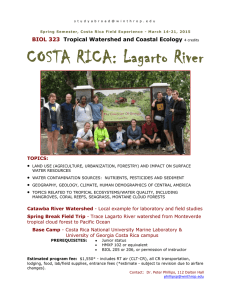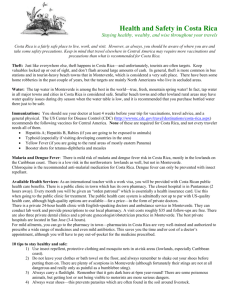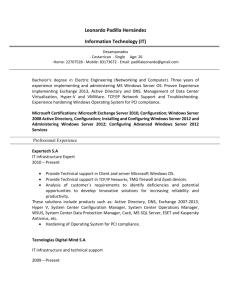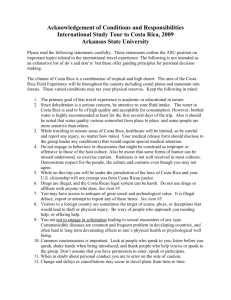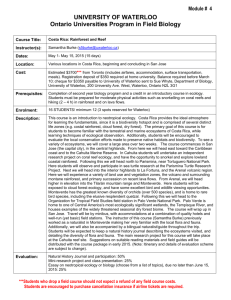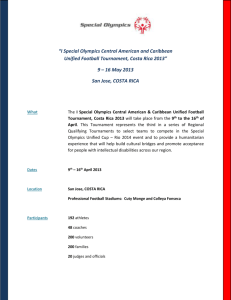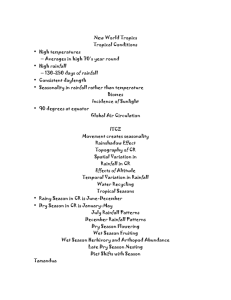Using stable isotopes to distinguish orographic from
advertisement
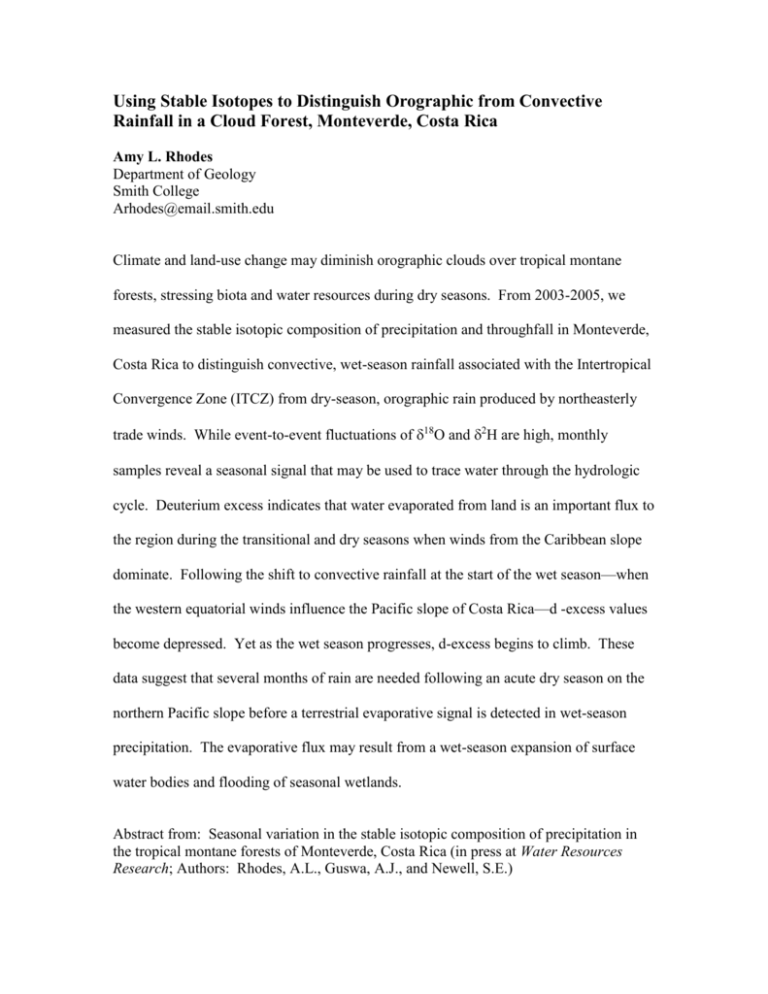
Using Stable Isotopes to Distinguish Orographic from Convective Rainfall in a Cloud Forest, Monteverde, Costa Rica Amy L. Rhodes Department of Geology Smith College Arhodes@email.smith.edu Climate and land-use change may diminish orographic clouds over tropical montane forests, stressing biota and water resources during dry seasons. From 2003-2005, we measured the stable isotopic composition of precipitation and throughfall in Monteverde, Costa Rica to distinguish convective, wet-season rainfall associated with the Intertropical Convergence Zone (ITCZ) from dry-season, orographic rain produced by northeasterly trade winds. While event-to-event fluctuations of 18O and 2H are high, monthly samples reveal a seasonal signal that may be used to trace water through the hydrologic cycle. Deuterium excess indicates that water evaporated from land is an important flux to the region during the transitional and dry seasons when winds from the Caribbean slope dominate. Following the shift to convective rainfall at the start of the wet season—when the western equatorial winds influence the Pacific slope of Costa Rica—d -excess values become depressed. Yet as the wet season progresses, d-excess begins to climb. These data suggest that several months of rain are needed following an acute dry season on the northern Pacific slope before a terrestrial evaporative signal is detected in wet-season precipitation. The evaporative flux may result from a wet-season expansion of surface water bodies and flooding of seasonal wetlands. Abstract from: Seasonal variation in the stable isotopic composition of precipitation in the tropical montane forests of Monteverde, Costa Rica (in press at Water Resources Research; Authors: Rhodes, A.L., Guswa, A.J., and Newell, S.E.)

